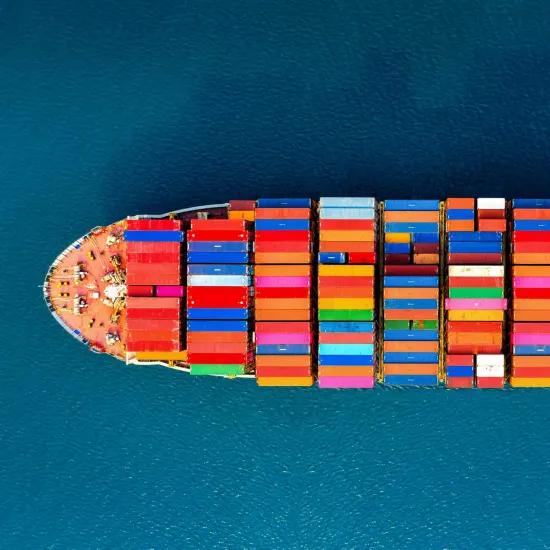In the previous episode of our blog post series we explored how liability change throughout the product life time discloses circular value. This post tackles the externalised cost, their potential impact and how it influences your company's resilience.
In this series of blogposts we unravel the circular economy, connecting theory with practical examples and best practices. We use Walter Stahel’s book ‘The Circular Economy: A User’s Guide’ to dig deeper into key insights and link them to real-world examples and cases.
What is 'externalised cost'?
According to Wikipedia the definition of externalities goes as follows: ‘In economics, an externality is the cost or benefit that affects a third party who did not choose to incur that cost or benefit. Externalities often occur when the production or consumption of a product or service's private price equilibrium cannot reflect the true costs or benefits of that product or service for society as a whole.’
In ecological economics this is often translated to the benefits the economy has from the natural resources that do not belong to someone’s liability. Who owns the fresh air or the ozone layer, the cooling capacity of oceans, the purification capacity of rivers, who owns not yet discovered mineral resources, …?
Many articles and books are published discussing those commons, the externalities and how to internalise those cost by taxes or incentives (like Pigouvian taxes & subsidies), cap and trade methods or tradeable permits.
What we explore in this blog is how this might link to you as a manufacturer of physical products and we focus on the materials rather than the energy-related externalities. Should a manufacturer start to get prepared to deal with increasing internalisation of this types of cost? If so, how to start? What might be the impact to your circular economy ambition and strategy? Finally, we want to link to the resilience we need to build in in our companies and collaborative networks.
What signs could indicate that costs are backfiring?
What we are familiar with
We are already familiar with some forms of external costs that are assigned to manufacturers. It already is the case with waste, for which the credo 'the polluter pays’ goes. This is a statement that tries to internalise some cost related to the waste collection, treatment and recycling to an actor in the product value chain. It is enforced through regulatory concepts such as extended producer responsibility (EPR). In practice often it is again collectivised by setting up collective end-of-life collection schemes. Think about WEEE and some household waste (plastic bottles, …) which is in many EU countries set up in collective schemes. The good news is that a large majority of this waste is controlled well and finds its way to recycling. On the other hand, the incentives for manufactures to invest in design for recycling, design for reuse, … are lacking. Most of the externalities are entering our companies through policy and regulations (Reach, RoHs, …), impacting the cost of operation and thus product cost. In some other cases the price volatility of the resources can be a sign of externalities entering our economy. Think of availability and price evolutions of stainless steel, copper, … especially of all the critical raw materials itself (cobalt, magnesium, neodymium, tungsten, helium, natural rubber, …) over the years.
Also other forms of internalisation are being explored or already implemented. Taxes on CO2, waste water, … are other methods from governments to assign some of the externalities to specific actors in the industry. Moreover, also the EU has launched the Product Environmental Footprint (PEF), Organizational Environmental Footprint (OEF), … as steps to get the pieces in place.
What do we know for sure
Our economies put increasing pressure on the natural resources and the commons. It is certain one day the costs made, will need to be paid. For sure lots of those costs will be paid by the governments and so indirectly this will one day spread over the economic actors including manufacturing companies.
At this moment, however, it is all still very fuzzy and unpredictable when and how hard those externalities will backfire on our manufacturing companies.
For manufacturing companies an unpredictable impact of the externalities might be concentrated in the material use. Materialsare a finite resource. Some materials might become even more critical due to geopolitical situations, their physical appearance, geographic locations and the associated extraction cost. The market failure here is that the price cannot reflect the scarcity, since the available (undiscovered) amount of the resource underground is simply unknown. The supply and demand mechanism does not work either. Extraction continues until the extraction cost is too high compared to the market price, which potentially might lead to sudden supply concerns. On top of this, the future demand - the demand from future generations - has no impact or influence on the current economic pricing mechanism. (Source: Ecological Economics H Daly)
Therefore, the externalities related to the resource use are a far more underestimated risk for manufacturing companies than those related to energy use.
How can manufacturing companies deal with this risk?
At this moment we see two ways to get prepared. The first is to get an idea of the risk/cost associated to your product. This allows you to make material choices based on the associated risk. The second is getting more functionality (and thus value) out of each unit of resource that passes through your hands.
The good news is that both methods have practical and easy-to-use tools and that those are already applied by multiple manufacturing companies.
Getting an idea of the externalities can be seen as a measure for the environmental impact of a product and its use scenario, including the end-of-life process. Multiple methods for life-cycle analysis (LCA) and life-cycle costing analysis (LCC) exists, from extended examinations up to easy-to-use simplified versions. A good starting point with the concept is the eco-cost method (TU Delft). This method provides a single-score environmental impact. It is a simplified method, which has as a benefit that it expresses the environmental impact as a cost (in euros). It means that you can see this cost as the financial risk that is associated to the investigated scenario if the externalities would be internalised.
One might argue that this method is not representing the exact and correct value. It is true, the value (eco-cost) is not the effective policy-driven tax value of the externalities. In practice however, it allows a manufacturing company to compare scenarios and take informed decisions on, for instance, material choice. As in many cases, be aware that the way you calculate (scope, method applied, …) impacts the outcome.
Example: The classical indicator for materials depletion in LCA is the 'Abiotic Depletion Potential' (ADP) which is proportional to ( (global consumption (ton/year) / (Extractable Global Resources)² ). This ADP is highly inaccurate (uncertain): the EGR has an uncertainty of more than a factor 100. Since this is squared, it results in an uncertainty of a factor 10.000 of the denominator. The global consumption is also highly uncertain, since factors for recycling and substitution are not known.
| You can experiment yourself by downloading the eco-cost LCA app. Also online courses are being organised, based on the EIT Raw Materials project Innomat. Interested? Contact us! |
Other LCA-like approaches might work for you as well and provide useful insights to allow you to take informed decisions. Keep using them. We encourage you to approach LCAs with a good proportion of common sense and keep asking the reasoning behind their outcomes.
This illustrates the need for additional input prior to taking informed decisions.
Luckily LCA or LCC-like approaches are not the only tools to support you. They do not provide you all the answers. Key insight is that the product itself determines only a portion of the environmental impact. The way we use, reuse, repair and discard the products have often a more significant impact. Our behaviour is in general more important than our products and involved technology.
Example: over time the weight and thus the resources needed per PET bottle is reduced from about 50 gr in the eighties to around 30 gr now. Meanwhile, we all buy at least five times more bottles.
This means that we will need to find solutions promoting extended use, reuse, sharing, refurbishing, repurpose, ... while staying profitable as a manufacturers. In other words, manufacturers should find income models for products with extended lifetime. This is why the circular economy and its new business models are important leverages. If your external costs - assigned to a material or resources - can be spread over more and/or longer income you reduce your business risk.
Example: Q-lite, a manufacturer of LED screens and signs, adapted its product design to become more modular and embrace the circular economy. This allowed the company to disclose value in remanufacturing, product as a service, upgrading services, … enabling it to provide more and longer functionality while the resource needs do not rise at the same pace.
Resilience to externalities
Such as is the case in other sectors, a good practice to deal with uncertainties and risks is to spread them. So no silver bullet exists, but an entire set of actions can help to reduce the risk. Here are some highlights to reduce your vulnerability.
Use your improved insights in the environmental impacts (from LCA-like tools) to choose for lower risk materials and business models. You as a manufacturing company can do a lot:
- investigate the scarcity of the materials used and reduce the amount of scarce materials
- explore the use of renewable or secondary resources
- design at least for optimal recycling
- get involved in second-hand sales
- investigate refurbishing and remanufacturing
- try out new income models that allow you to get over time more income out of each product
- collaborate with partners beyond your current value chain (recyclers, service providers, …)
Since all companies are different and you have a unique set of capabilities, competences, products, markets, … you will need to make your own cocktail.
Example: b-token produces and sells plastic tokens. A few years ago, the company decided to invest in secondary and or renewable resources. Since this year all virgin material has been banned and the entire production runs on biobased materials, recyclates and waste streams. This has reduced their business risks linked to fossil-based materials, their branding to customers and employers.
Get the support you need
In a couple of weeks we will launch a tool to support you with these choices, allowing you to determine your priorities and provide you with some tips and food for thought. Furthermore, a full set of collective and individual support programmes will be launched. One of these is the learning network Circular Economy Connect, that will start in September.
Want to know more? Contact us!
(Source picture : ID 26082316 © Liljam | Dreamstime.com)
]]>




